Search Result
Results for "
protein tyrosine phosphatase 1B
" in MedChemExpress (MCE) Product Catalog:
| Cat. No. |
Product Name |
Target |
Research Areas |
Chemical Structure |
-
- HY-12312
-
-
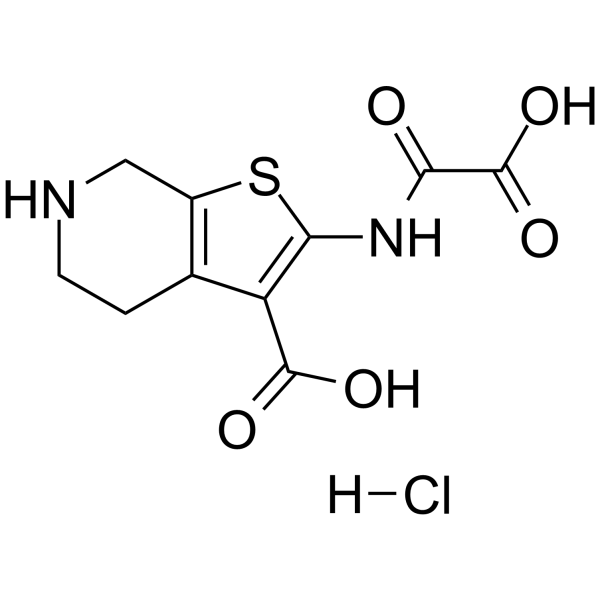
-
- HY-N10378
-
|
|
Phosphatase
|
Neurological Disease
Metabolic Disease
|
|
Rubrofusarin 6-O-β-D-glucopyranoside, the glycoside of Rubrofusarin, is a protein tyrosine phosphatase 1B (PTP1B) inhibitor with the IC50 of 87.36 μM. Rubrofusarin 6-O-β-D-glucopyranoside can be used for the research of comorbid diabetes and depression .
|
-
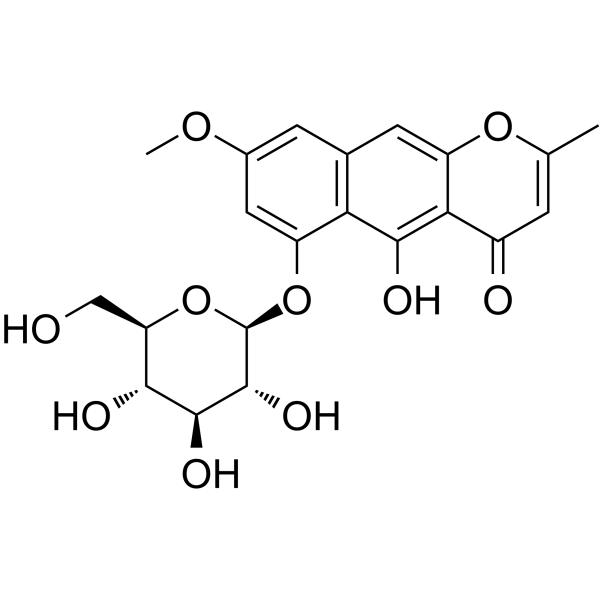
-
- HY-124896
-
|
6-Geranylnaringenin; Mimulone
|
Phosphatase
Apoptosis
Autophagy
|
Inflammation/Immunology
Cancer
|
|
Bonannione A (6-Geranylnaringenin; Mimulone), a prenylflavonoid, is an orally active and potent protein tyrosine phosphatase 1B (PTP1B) inhibitor with an IC50 of 14 µM. Bonannione A triggers caspase-dependent apoptosis. Bonannione A induces autophagy through p53-mediated AMPK/mTOR pathway. Bonannione A shows anti-inflammatory, antiradical and anti-cancer activity .
|
-
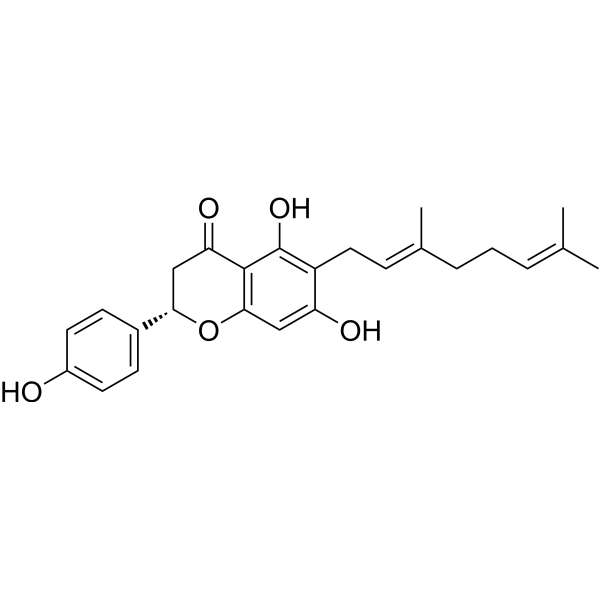
-
- HY-135564B
-
|
|
Phosphatase
|
Cancer
|
|
(Rac)-RK-682, a racemate of RK-682, is a protein tyrosine phosphatases (PTPases) inhibitor. (Rac)-RK-682 inhibits protein tyrosine phosphatase 1B (PTP-1B), low molecular weight protein tyrosine phosphatases (LMW-PTP), and cell division cycle 25B (CDC-25B) with IC50s of 8.6 μM, 12.4 μM, and 0.7 μM, respectively .
|
-
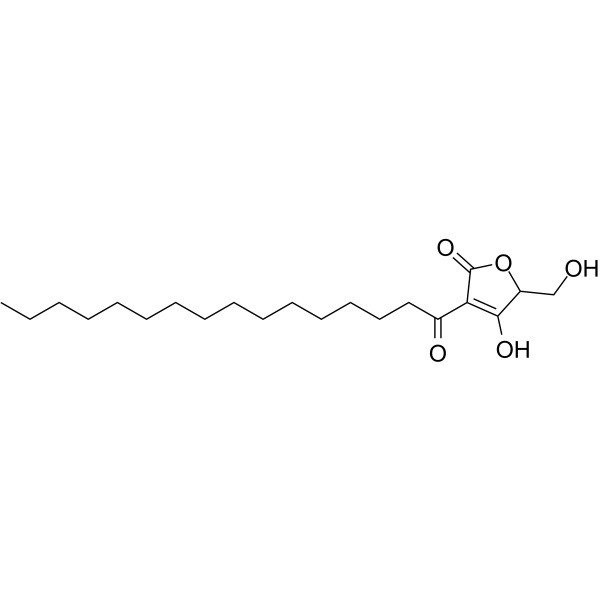
-
- HY-N3267
-
|
|
Phosphatase
|
Metabolic Disease
|
|
Methyl pseudolarate B, a natural diterpenoid, is a protein tyrosine phosphatase 1B (PTP1B) (Phosphatase) inhibitor with an IC50 value of 10.9 μM .
|
-
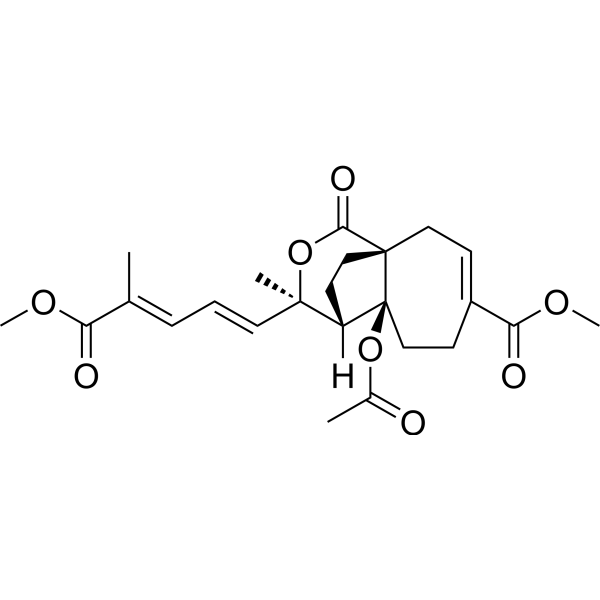
-
- HY-N4185
-
|
|
Phosphatase
|
Neurological Disease
|
|
Licoflavone A is a flavonoid isolated from the roots of Glycyrrhiza uralensis, inhibits protein tyrosine phosphatase-1B (PTP1B), with an IC50 of 54.5 μM .
|
-
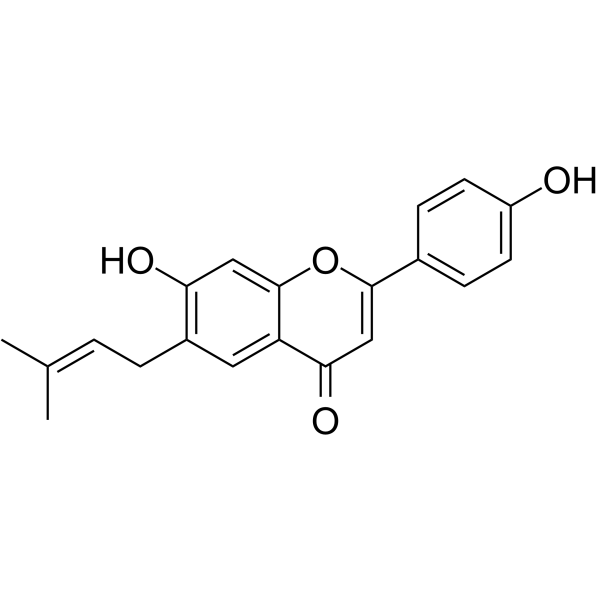
-
- HY-100462
-
-
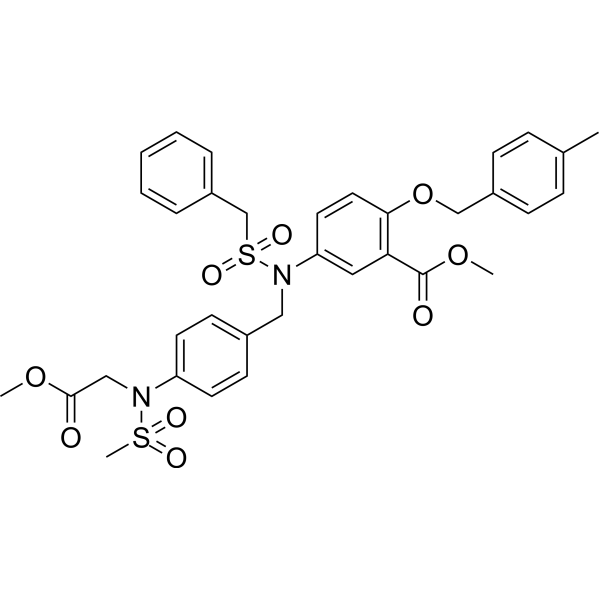
-
- HY-N10064
-
|
|
Others
|
Metabolic Disease
|
|
Ficusonolide has significant antidiabetic activity with a possible mechanism of interaction with dipeptidyl peptidase-IV (DPP-IV), protein tyrosine phosphatase 1B (PTP-1B), α-glucosidase, and α-amylase.
|
-
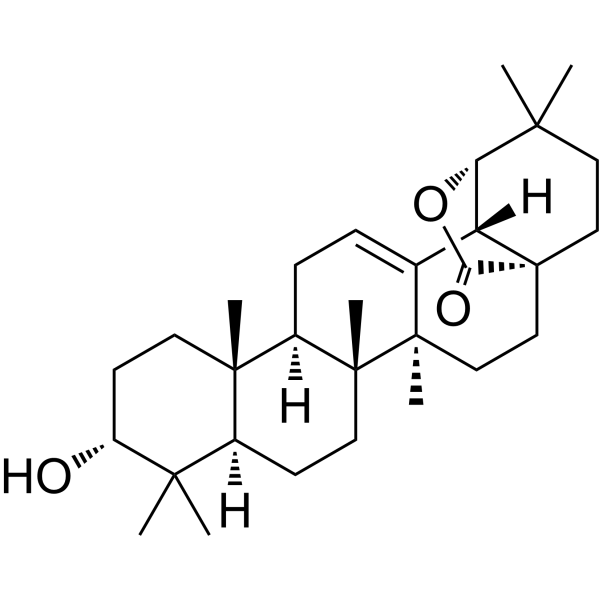
-
- HY-128978
-
|
|
Phosphatase
|
Metabolic Disease
|
|
(E,E)-RAMB4 is a potent and selective potent protein tyrosine phosphatase-1B (PTP1B) inhibitor extracted from patent CN103626692A, example 1 .
|
-

-
- HY-19779
-
|
|
|
|
|
JTT 551 is selective a protein tyrosine phosphatase 1B (PTP1B) inhibitor, with Kis of 0.22 μM and 9.3 μM for PTP1B and TCPTP (T-cell protein tyrosine phosphatase), respectively; JTT 551 can be used in the research of type 2 diabetes mellitus.
|
-
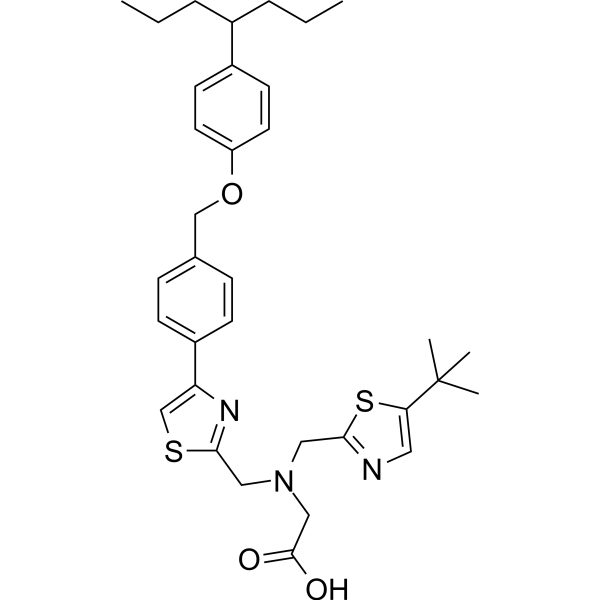
-
- HY-N12736
-
|
|
Phosphatase
|
Metabolic Disease
|
|
Dehydrodanshenol A is a non-competitive inhibitor of Protein tyrosine phosphatase 1B (PTP1B), with an IC50 value of 8.5 μM. Dehydrodanshenol A can be used in diabetes-related research .
|
-
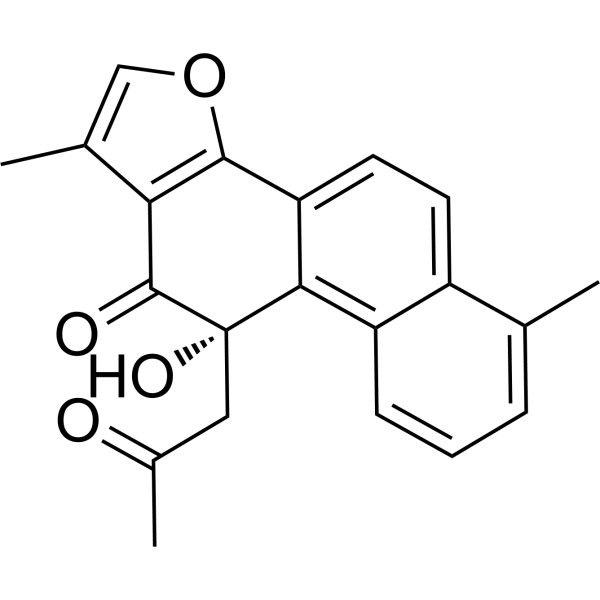
-
- HY-N6650
-
|
|
Phosphatase
|
Metabolic Disease
|
|
Isotanshinone IIA, an abietane-type diterpene metabolite, could non-competitively inhibit Protein Tyrosine Phosphatase 1B (PTP1B) activity with an IC50 0f 11.4 μM.
|
-
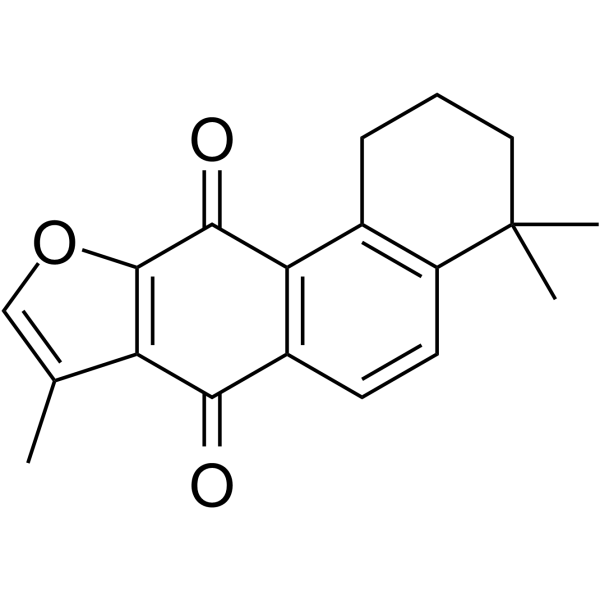
-
- HY-N0374
-
|
|
Glucosidase
|
Metabolic Disease
|
|
Licochalcone C could inhibit α-glucosidase, with IC50s of <100 nM and 92.43 μM for α-glucosidase and protein tyrosine phosphatase 1B (PTP1B), respectively.
|
-
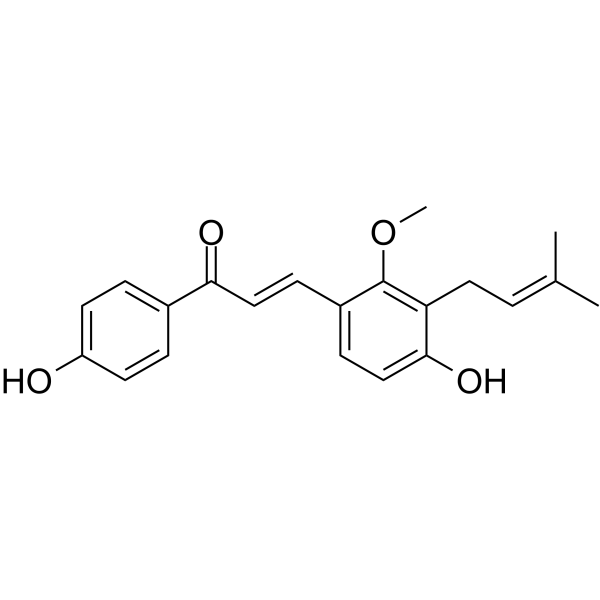
-
- HY-N10649
-
|
|
Phosphatase
|
Metabolic Disease
|
|
PTP1B-IN-21 is a selective inhibitor of protein tyrosine phosphatase 1B (PTP1B; IC50=1.56 μM) over the highly homologous T-cell protein tyrosine phosphatase (TCPTP; IC50>100 μM), which is a key target for type 2 diabetes inhibition .
|
-
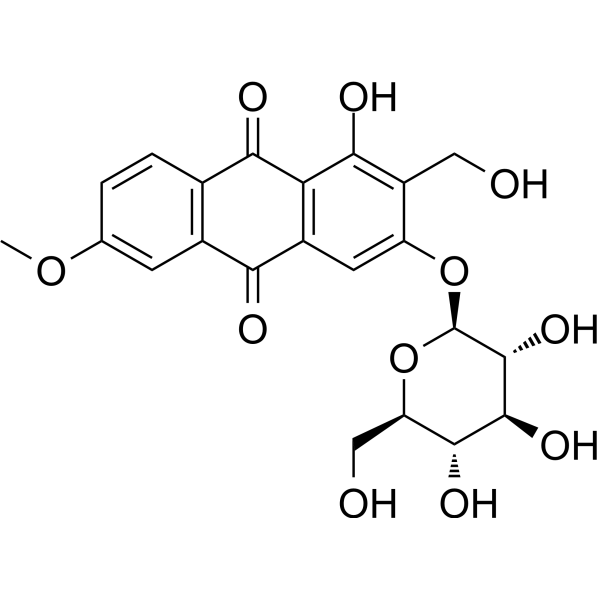
-
- HY-N10648
-
|
|
Phosphatase
|
Metabolic Disease
|
|
PTP1B-IN-20 is a selective inhibitor of protein tyrosine phosphatase 1B (PTP1B; IC50=1.05 μM) over the highly homologous T-cell protein tyrosine phosphatase (TCPTP; IC50=78.0 μM), which is a key target for type 2 diabetes inhibition .
|
-
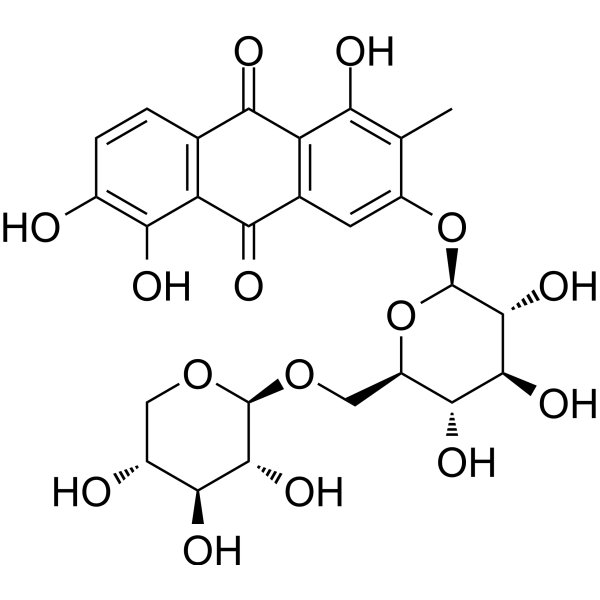
-
- HY-12219
-
|
Trodusquemine; Aminosterol-1436
|
Phosphatase
|
Endocrinology
|
|
MSI-1436 is a selective, non-competitive inhibitor of the enzyme protein-tyrosine phosphatase 1B (PTP1B), with an IC50 of appr 1 μM, 200-fold preference over TCPTP (IC50, 224 μM).
|
-

-
- HY-12219A
-
|
Trodusquemine lactate; Aminosterol-1436 lactate
|
Phosphatase
|
Endocrinology
|
|
MSI-1436 lactate is a selective, non-competitive inhibitor of the enzyme protein-tyrosine phosphatase 1B (PTP1B), with an IC50 of 1 μM, 200-fold preference over TCPTP (IC50 of 224 μM).
|
-
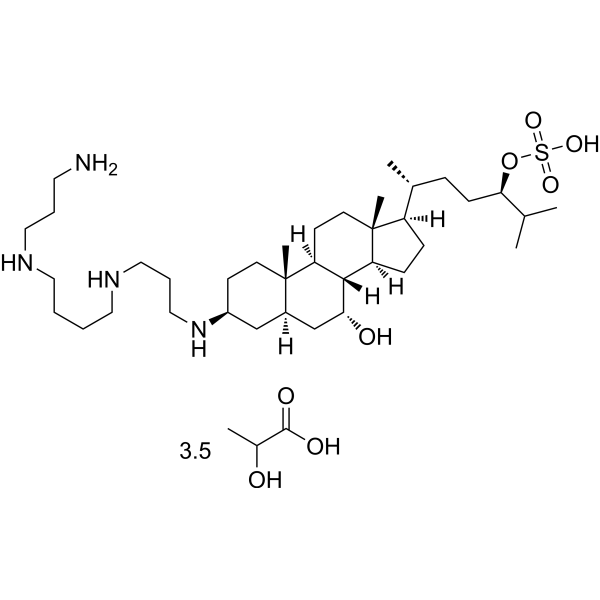
-
- HY-N1549
-
|
Naringenin 7-0-glucoside
|
|
|
|
Prunin is a potent inhibitor of human enterovirus A71 (HEVA71). Prunin shows strong inhibitory activity against protein tyrosine phosphatase 1B (PTP1B), with an IC50 of 5.5 µM .
|
-
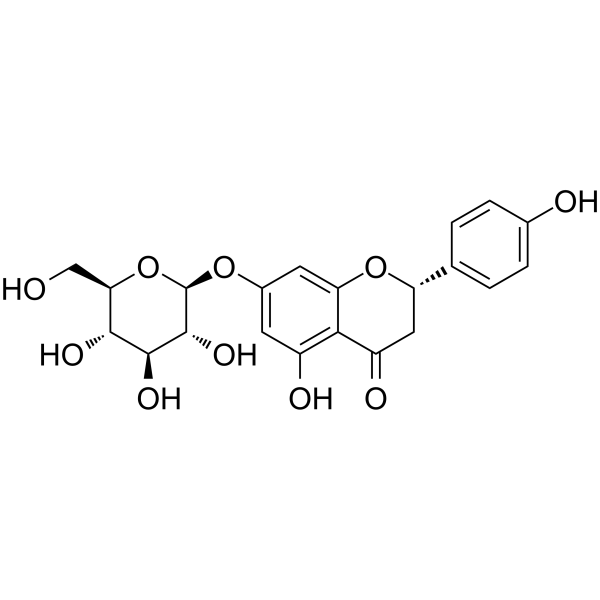
-
- HY-N4143
-
|
|
Phosphatase
|
Metabolic Disease
|
|
Cyanidin 3-arabinoside is a selective and reversible protein tyrosine phosphatase 1B (PTP1B) inhibitor, with an IC50 of 8.91 μM. Cyanidin 3-arabinoside is potential for the research of type 2 diabetes .
|
-
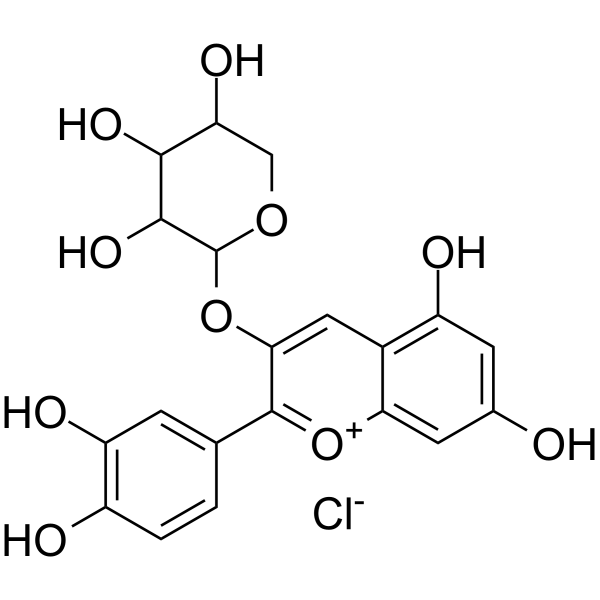
-
- HY-10704
-
|
PTP1B inhibitor
|
Phosphatase
|
Metabolic Disease
|
|
PTP1B-IN-1 is a potent protein tyrosine phosphatase-1B (PTP1B) inhibitor with IC50 of 1.6 mM; 1,2,5-thiadiazolidin-3-one-1,1-dioxide scaffold for derivatives synthesis.
|
-
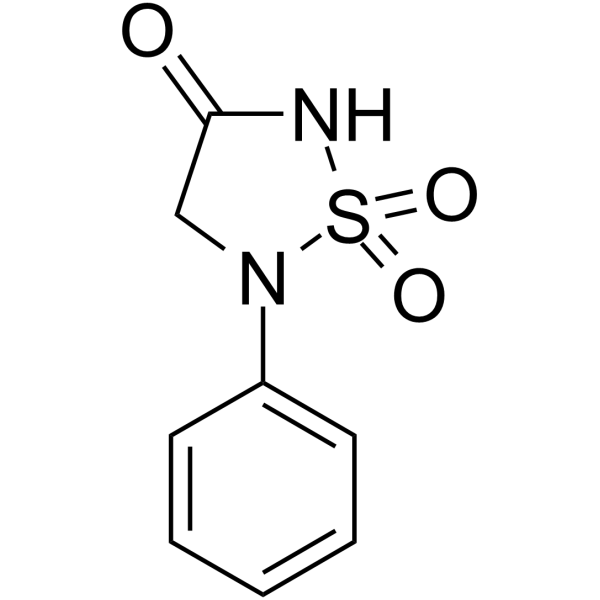
-
- HY-N2451
-
|
|
Phosphatase
|
Metabolic Disease
Endocrinology
|
|
Aloe-emodin-8-O-β-D-glucopyranoside, a compound isolated from Saussrurea lappa, is a moderate inhibitor of human protein tyrosine phosphatase 1B (hPTP1B) with an IC50 of 26.6 μM .
|
-
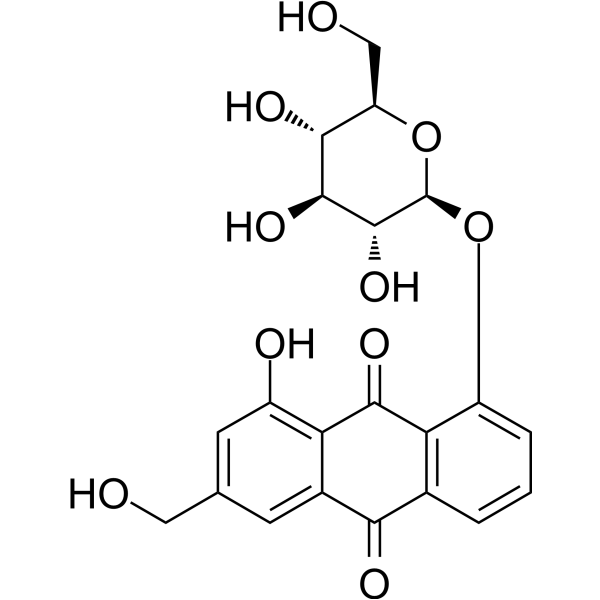
-
- HY-108196
-
|
|
Phosphatase
|
Endocrinology
|
|
PTP1B-IN-15 is a potent and selective inhibitor of protein tyrosine phosphatase 1B (PTP1B). PTP1B-IN-15 has the potential for the research of type II diabetes and obesity .
|
-
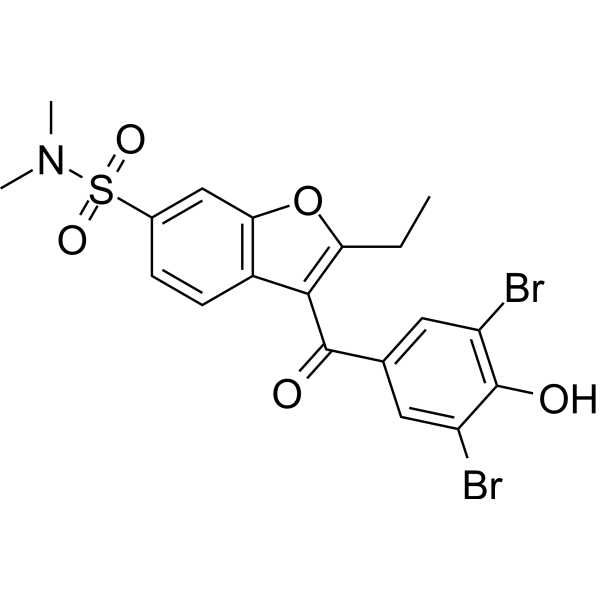
-
- HY-N1230
-
|
Allolicoisoflavone B
|
|
|
|
Sophoraisoflavone A (Allolicoisoflavone B) is a nature product that could be isolated from Glycyrrhiza inflate. Sophoraisoflavone A is a potent protein tyrosine phosphatase 1B (PTP1B) inhibitor with an IC50 value of 0.80 μM. Sophoraisoflavone A can be used in research of inflammation .
|
-

-
- HY-N8200
-
-
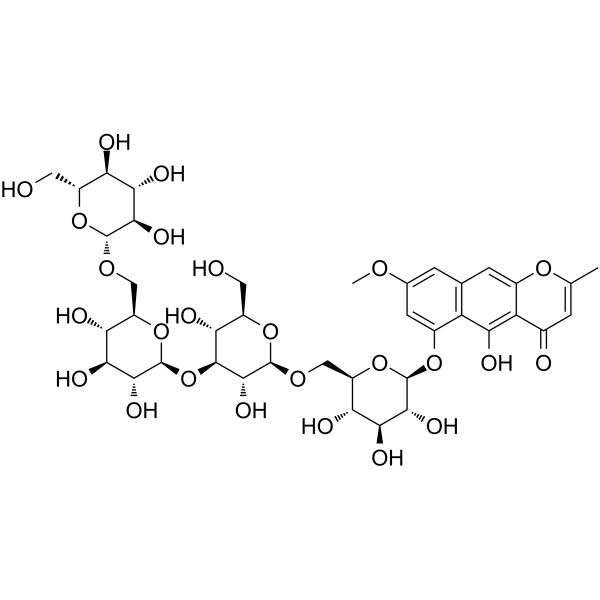
-
- HY-144717
-
|
|
Phosphatase
|
Metabolic Disease
|
|
PTP1B-IN-18 is an orally active complete mixed type protein tyrosine phosphatase 1B (PTP1B) inhibitor with a Ki of 35.2 μM. PTP1B-IN-18 can be used for type 2 diabetes research .
|
-
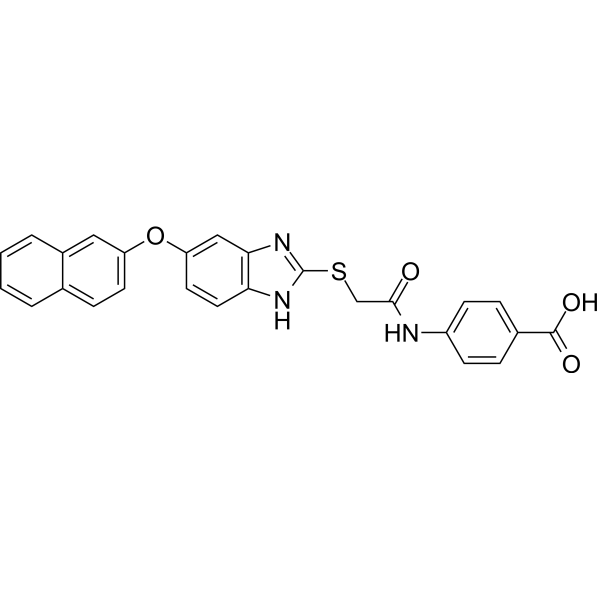
-
- HY-N7599
-
|
|
Phosphatase
Glucosidase
|
Metabolic Disease
|
|
Chrysophanol triglucoside is an anthraquinone isolated from Cassia obtusifolia, inhibits protein tyrosine phosphatases 1B (PTP1B) and α-glucosidase with IC50s of 80.17 and 197.06 µM, respectively. Chrysophanol triglucoside has the potential for diabetes research .
|
-

-
- HY-144718
-
|
|
Phosphatase
|
Metabolic Disease
|
|
PTP1B-IN-17 (Compound 45), a potential selective benzimidazole derivative, acts as a protein tyrosine phosphatase 1B (PTP1B) inhibitor with a Ki of 30.2 μM. PTP1B-IN-17 can be used for the research of type 2 diabetes.
|
-

-
- HY-144716
-
|
|
Phosphatase
|
Metabolic Disease
|
|
PTP1B-IN-19 (Compound 43), a potential selective benzimidazole derivative, acts as a protein tyrosine phosphatase 1B (PTP1B) inhibitor with a Ki of 23.3 μM. PTP1B-IN-19 can be used for the research of type 2 diabetes.
|
-
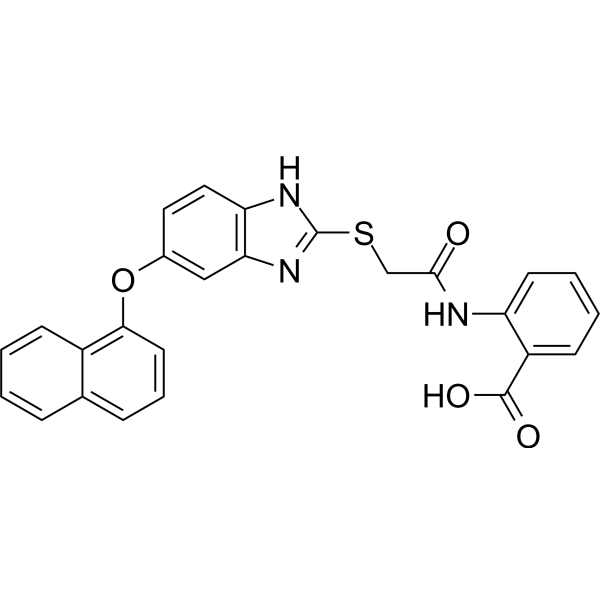
-
- HY-144713
-
|
|
Phosphatase
|
Metabolic Disease
|
|
PTP1B-IN-16 (Compound 46), a potential selective benzimidazole derivative, acts as a protein tyrosine phosphatase 1B (PTP1B) inhibitor with a Ki of 12.6 μM. PTP1B-IN-16 can be used for the research of type 2 diabetes.
|
-
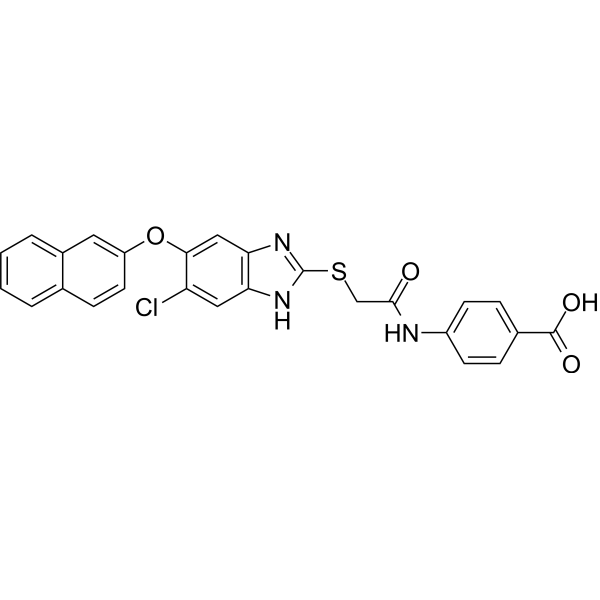
-
- HY-153018
-
|
|
Phosphatase
|
Metabolic Disease
|
|
PTP1B-IN-22, a ZINC02765569 derivative, is a potent protein tyrosine phosphatase 1B (PTP1B) inhibitor. PTP1B-IN-22 has PTP1B inhibition and glucose uptake in skeletal muscle L6 myotubes .
|
-

-
- HY-N0646
-
|
|
Phosphatase
Endogenous Metabolite
|
Cancer
|
|
Silydianin is an active constituent of Silybium marianum, with exhibit anti-collagenase, antitumor and anti-elastase activities. Silydianin is a natural protein tyrosine phosphatase 1B (PTP1B) with an IC50 of 17.38 μM. Silydianin has inhibitory effect on the in vitro production and release of oxidative products .
|
-
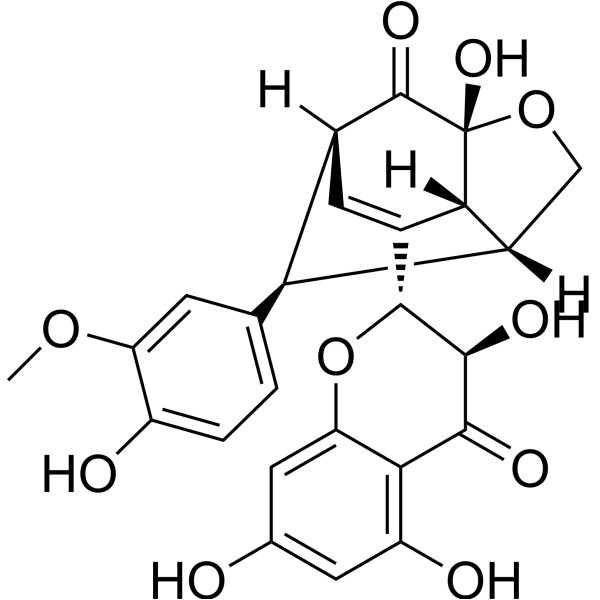
-
- HY-N3734
-
|
|
Beta-secretase
Phosphatase
|
Neurological Disease
|
|
Deoxyneocryptotanshinone, a natural tanshinone, is a high affinity BACE1 (Beta-secretase) inhibitor with an IC50 value of 11.53 μM. Deoxyneocryptotanshinone shows a promising dose-dependent inhibition of protein tyrosine phosphatase 1B (PTP1B) with an IC50 value of 133.5 μM. Deoxyneocryptotanshinone can be used for Alzheimer's disease research .
|
-
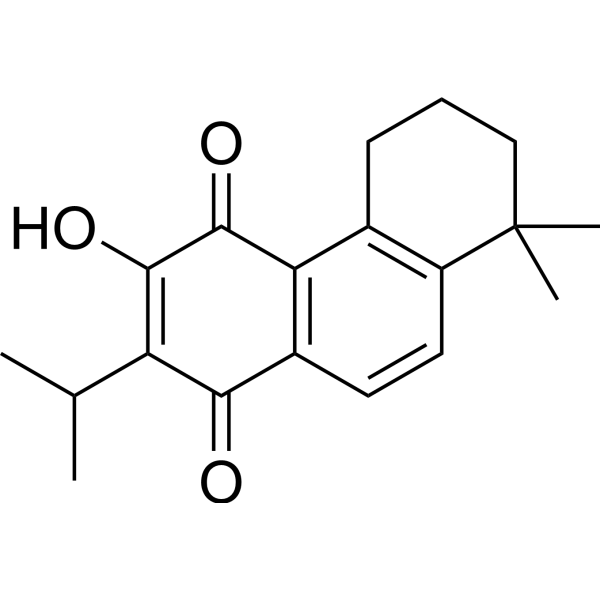
-
- HY-123966
-
|
|
Phosphatase
|
|
|
MY33-3 is a potent and selective inhibitor of receptor protein tyrosine phosphatase (RPTP)β/ζ, with an IC50 of ~0.1 μM. MY33-3 also inhibits PTP-1B (IC50 ~0.7 μM). MY33-3 can reduce ethanol consumption and alleviate Sevoflurane-induced neuroinflammation and cognitive dysfunction .
|
-
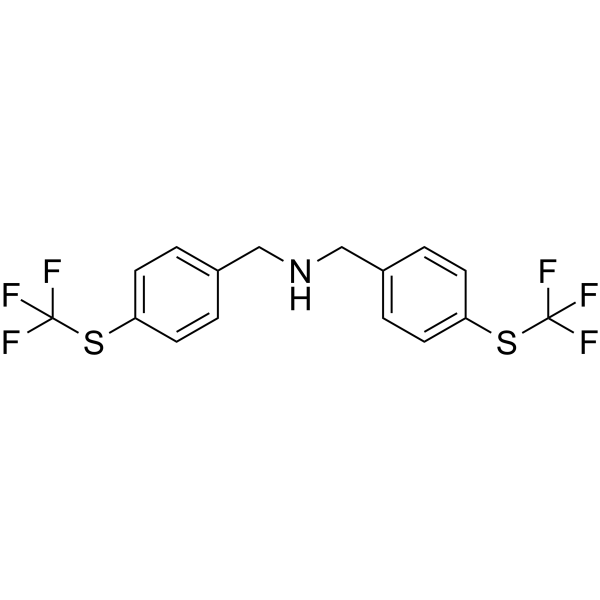
-
- HY-123966A
-
|
|
Phosphatase
|
Neurological Disease
|
|
MY33-3 hydrochloride is a potent and selective inhibitor of receptor protein tyrosine phosphatase (RPTP)β/ζ, with an IC50 of ~0.1 μM. MY33-3 hydrochloride also inhibits PTP-1B (IC50 ~0.7 μM). MY33-3 hydrochloride can reduce ethanol consumption and alleviate Sevoflurane-induced neuroinflammation and cognitive dysfunction .
|
-
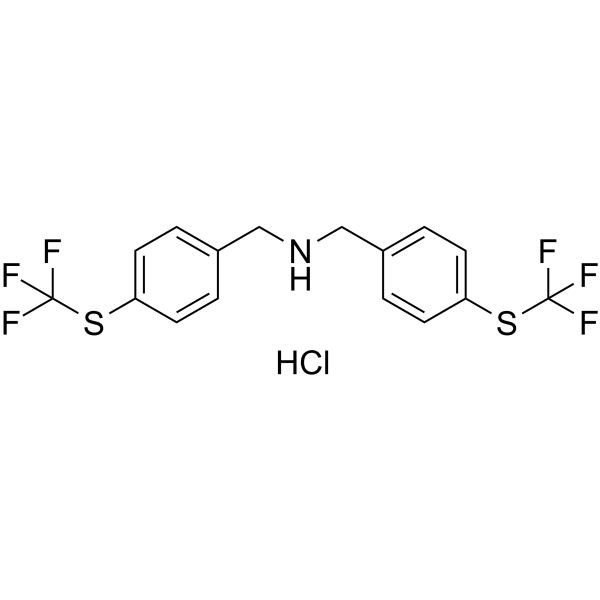
-
- HY-120327
-
KY-226
1 Publications Verification
|
Phosphatase
|
Neurological Disease
Metabolic Disease
|
|
KY-226 is a potent, selective, orally active and allosteric protein tyrosine phosphatase 1B (PTP1B) inhibitor with an IC50 of 0.25 μM, and without PPARγ agonist activity. KY-226 exerts anti-diabetic and anti-obesity effects by enhancing insulin and leptin signaling, respectively. KY-226 also protects neurons from cerebral ischemic injury .
|
-
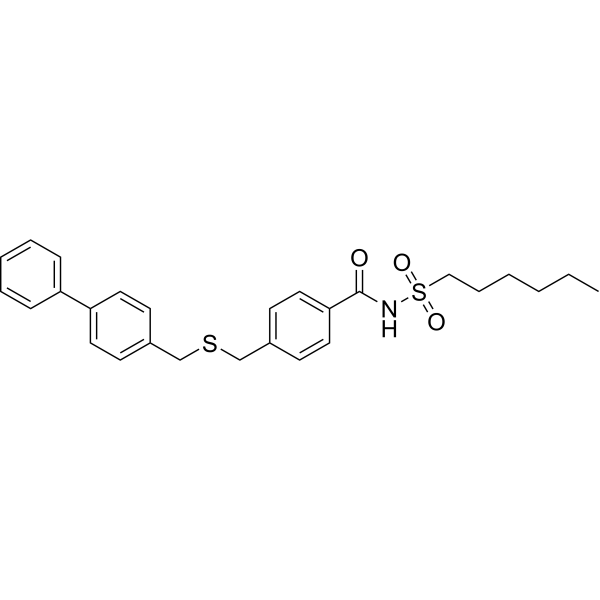
-
- HY-N1743
-
|
|
|
|
|
1-(4-Hydroxy-2-methoxyphenyl)-3-(4-hydroxy-3-prenylphenyl), isolated from Broussonetia kazinoki, shows in vitro inhibition of protein tyrosine phosphatase 1B (PTP1B) with an IC50 of 13.00 μM. PTP1B is a negative regulator of insulin action and an important mediator in the pathogenesis of insulinresistance and non-insulin dependent diabetes mellitus. PTP1B is regarded as a significant target for type 2 diabetes .
|
-

-
- HY-136065
-
|
|
PTEN
Phosphatase
Parasite
Apoptosis
|
Infection
Metabolic Disease
Inflammation/Immunology
Cancer
|
|
bpV(phen), a insulin-mimetic agent, is a potent protein tyrosine phosphatase (PTP) and PTEN inhibitor with IC50s of 38 nM, 343 nM and 920 nM for PTEN, PTP-β and PTP-1B, respectively. bpV(phen) inhibits proliferation of the protozoan parasite Leishmania in vitro. bpV(phen) strongly induces the secretion of a large number of chemokines and pro-inflammatory cytokines, and it activates a Th1-type pathway (IL-12, IFNγ). bpV(phen) can also induce cell apoptosis, and has anti-angiogenic and anti-tumor activity .
|
-

-
- HY-122818
-
|
|
PTEN
Phosphatase
Parasite
Apoptosis
|
Infection
Metabolic Disease
Inflammation/Immunology
Cancer
|
|
bpV(phen) trihydrate, a insulin-mimetic agent, is a potent protein tyrosine phosphatase (PTP) and PTEN inhibitor with IC50s of 38 nM, 343 nM and 920 nM for PTEN, PTP-β and PTP-1B, respectively. bpV(phen) trihydrate inhibits proliferation of the protozoan parasite Leishmania in vitro. bpV(phen) trihydrate strongly induces the secretion of a large number of chemokines and pro-inflammatory cytokines, and it activates a Th1-type pathway (IL-12, IFNγ). bpV(phen) trihydrate can also induce cell apoptosis, and has anti-angiogenic and anti-tumor activity .
|
-

-
- HY-149254
-
|
|
Phosphatase
Aldose Reductase
|
Metabolic Disease
|
|
PTP1B/AKR1B1-IN-1 is a dual inhibitor of protein tyrosine phosphatase 1B (PTP1B) and aldose reductase (AKR1B1), with IC50s of 0.06 μM and 4.3 μM, respectively. PTP1B/AKR1B1-IN-1 also inhibits TC-PTP with an IC50 value of 9 μM. PTP1B/AKR1B1-IN-1 serves as an insulin-mimetic agent in murine myoblasts, and reduces AKR1B1-dependent sorbitol accumulation. PTP1B/AKR1B1-IN-1 inhibits development of type 2 diabetes mellitus (T2DM) to control blood glucose levels .
|
-
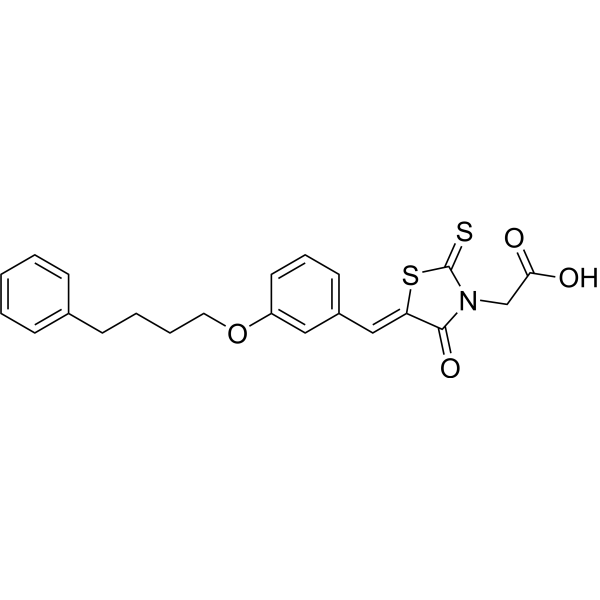
-
- HY-N2111
-
|
|
|
|
|
Momordicoside A is isolated from Momordica charantia L. Momordicoside A has the inhibitory effect on protein tyrosine phosphatase (PTP1B) .
|
-

-
- HY-15756
-
|
|
Phosphatase
|
Metabolic Disease
|
|
PTP1B-IN-4 is a non-competitive allosteric inhibitor of the protein tyrosine phosphatase PTP1B, with an IC50 of 8 μM. PTP1B-IN-4 is potentail for the research of obesity and diabetes .
|
-

-
- HY-100595
-
|
Stibogluconate trisodium nonahydrate
|
Phosphatase
Parasite
SHP2
|
Cancer
|
|
Sodium stibogluconate (Stibogluconate trisodium nonahydrate) is a potent inhibitor of protein tyrosine phosphatase. Sodium stibogluconate inhibits 99% of SHP-1, SHP-2 and PTP1B activity at 10, 100, 100 μg/mL, respectively.
|
-
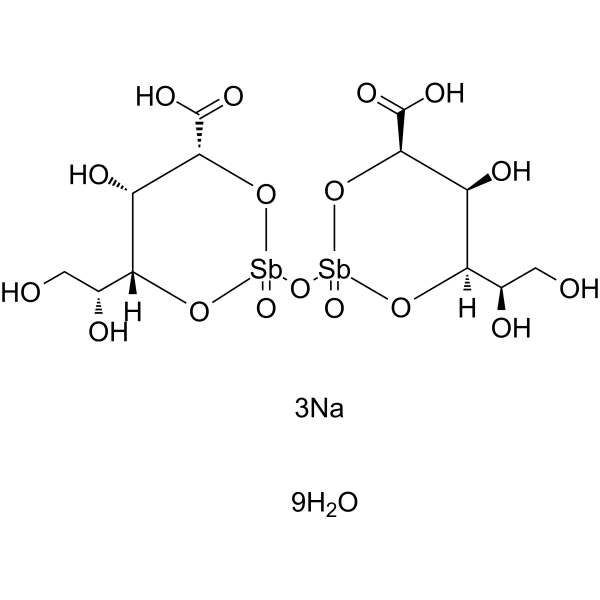
-
- HY-121515
-
|
|
Phosphatase
|
Metabolic Disease
|
|
DPM-1001 is a potent, specific, orally active and non-competitive inhibitor of protein-tyrosine phosphatase (PTP1B) with an IC50 of 100 nM. DPM-1001 is an analog of the specific PTP1B inhibitor MSI-1436. DPM-1001 has anti-diabetic property .
|
-
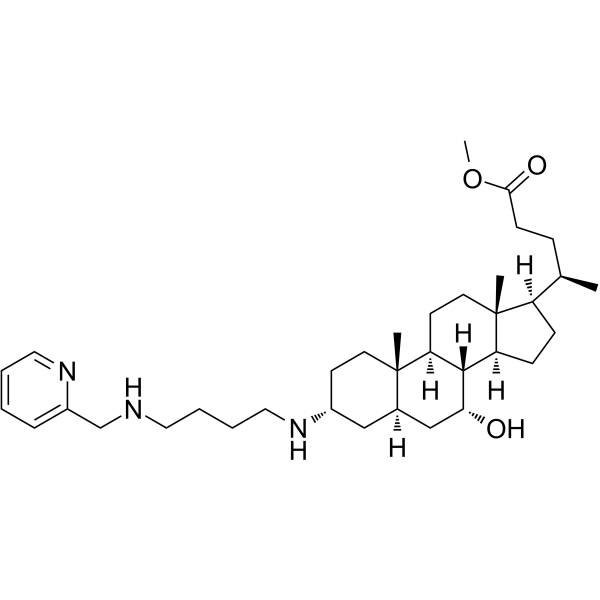
-
- HY-121515A
-
|
|
Phosphatase
|
Metabolic Disease
|
|
DPM-1001 trihydrochloride is a potent, specific, orally active and non-competitive inhibitor of protein-tyrosine phosphatase (PTP1B) with an IC50 of 100 nM. DPM-1001 trihydrochloride is an analog of the specific PTP1B inhibitor MSI-1436. DPM-1001 trihydrochloride has anti-diabetic property .
|
-
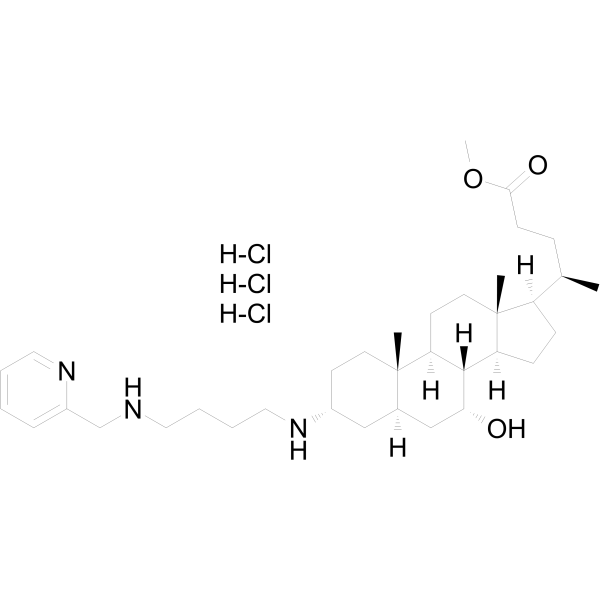
-
- HY-101964
-
|
|
SHP2
Phosphatase
|
Cancer
|
|
SPI-112 is a potent, selective and competitive SHP2 (PTPN11) inhibitor with IC50s of 1 μM, 18.3 μM and 14.5 μM for SHP2, protein tyrosine phosphatase (PTP) and PTP1B, respectively .
|
-
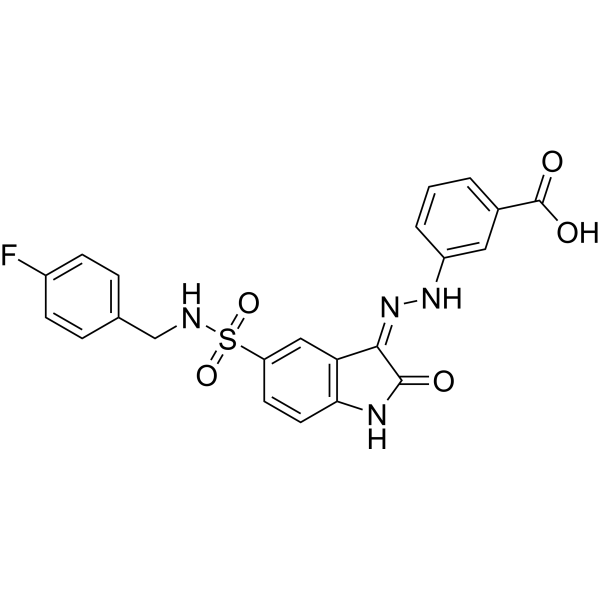
-
- HY-141800
-
|
|
Others
|
Others
|
|
MurA-IN-1 (compound 1a) is a PTPRR inhibitor, with IC50 values of 0.23 μM, 0.8 μM, 0.75 μM and 0.09 μM for PTP1B, PTPN5, PTPN7 and PTPRR, respectively . (A family of human MAPK-specific protein tyrosine phosphatases)
|
-

-
- HY-N12177
-
|
|
Phosphatase
|
Metabolic Disease
|
|
Cryptosporioptide A (Compound 3) is a pigment protein tyrosine phosphatase inhibitor derived from the insect-parasitic fungus Cordyceps gracilioides. Cryptosporioptide A inhibits PTP1B, SHP2, CDC25B, LAR and SHP1 enzymes with IC50 of 7.3, 5.7, 7.6, >50, 4.9 μg/mL, respectively .
|
-
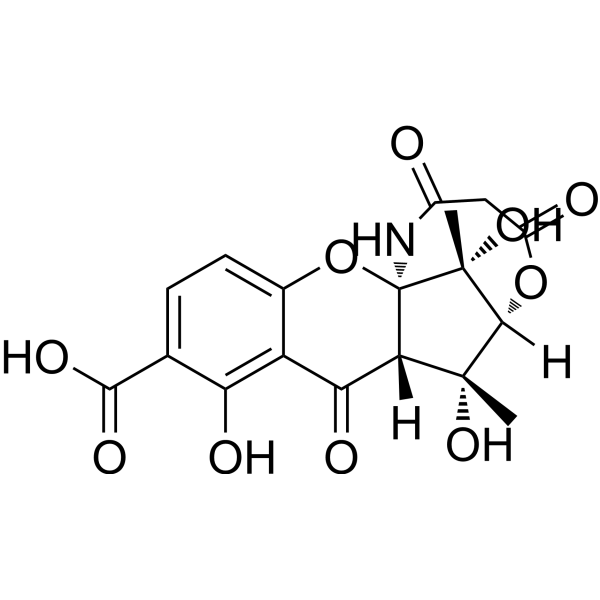
-
- HY-120159
-
|
|
SHP2
Phosphatase
|
Cancer
|
|
GS-493 is a selective protein tyrosine phosphatase SHP2 (PTPN11) inhibitor with an IC50 of 71 nM. GS-493 is 29- and 45-fold more active toward SHP2 than related SHP1 and PTP1B. GS-493 blocks cellular motility and growth of cancer cells. Antitumor activity .
|
-
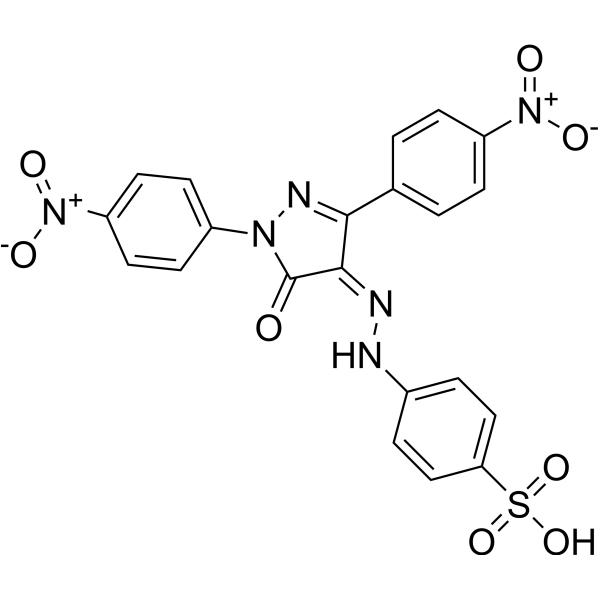
-
- HY-118567
-
|
BMOV
|
SHP2
Phosphatase
|
Metabolic Disease
|
|
Bis(maltolato)oxovanadium(IV) (BMOV) is a potent, reversible, competitive and orally active pan-PTP (protein tyrosine phosphatases) inhibitor. Bis(maltolato)oxovanadium(IV) inhibits HCPTPA, PTP1B, HPTPβ and SHP2 with IC50s of 126 nM, 109 nM, 26 nM and 201 nM, respectively. Bis(maltolato)oxovanadium(IV) is a potent insulin sensitizer .
|
-
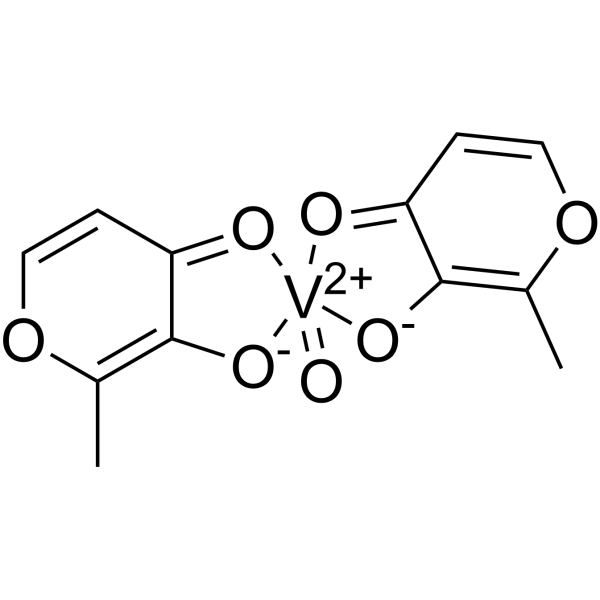
-
- HY-109041
-
|
AKB-9778
|
Phosphatase
Tie
|
Inflammation/Immunology
|
|
Razuprotafib (AKB-9778) is a potent and selective inhibitor of the catalytic activity of VE-PTP (vascular endothelial protein tyrosine phosphatase) with an IC50of 17 pM. Razuprotafib promotes TIE2 activation, enhances ANG1-induced TIE2 activation, and stimulates phosphorylation of signaling molecules in the TIE2 pathway, including AKT, eNOS, and ERK. Razuprotafib inhibits the structurally related phosphatase PTP1B with an IC50 of 780 nM. Razuprotafib shows excellent selectivity for VE-PTP versus a variety of phosphatases, with the exception of HPTPη (IC50=36 pM) and HPTPγ (100 pM) .
|
-
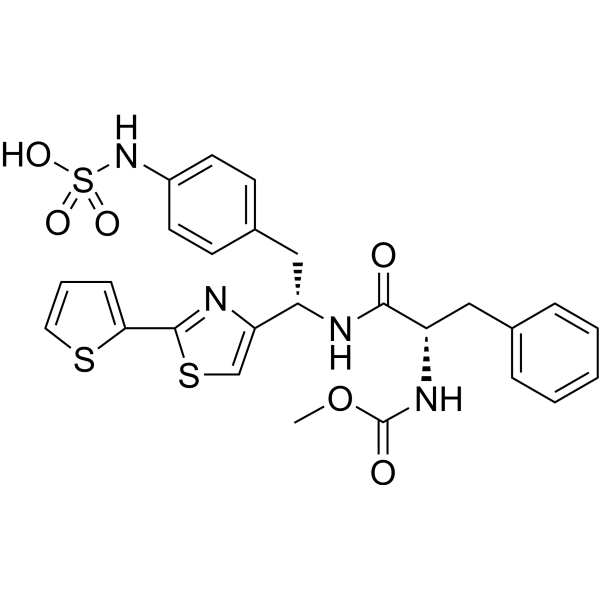
- HY-112478
-
|
|
Phosphatase
SHP2
|
Cancer
|
|
PTP Inhibitor IV is a protein tyrosine phosphatase (PTP) inhibitor that competitively inhibits DUSP14 phosphatase activity with an 50 of 5.21 μM . PTP Inhibitor IV inhibits SHP-2, PTP1B, PTP-ε, PTP Meg-2, PTP-σ, PTP-β, and PTP-μ with 50s of 1.8 μM, 2.5 μM, 8.4 μM, 13 μM, 20 μM, 6.4 μM, and 6.7 μM, respectively .
|
-
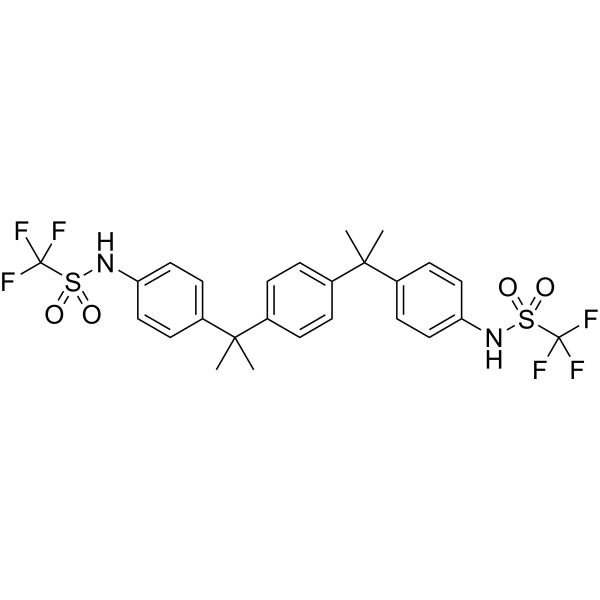
- HY-155558
-
|
|
Antibiotic
|
Infection
|
|
MptpB-IN-2 (compound 20) is a selective mycobacterium tuberculosis protein tyrosine phosphatase B (MptpB) inhibitor with IC50s of 0.64 μM, 4.06 μM and 4.14 μM for MptpB, MptpA and PTP1B, respectively. MptpB-IN-2 shows weak antituberculosis activity with a MIC of 64.9 μM for Mtb H37Rv .
|
-
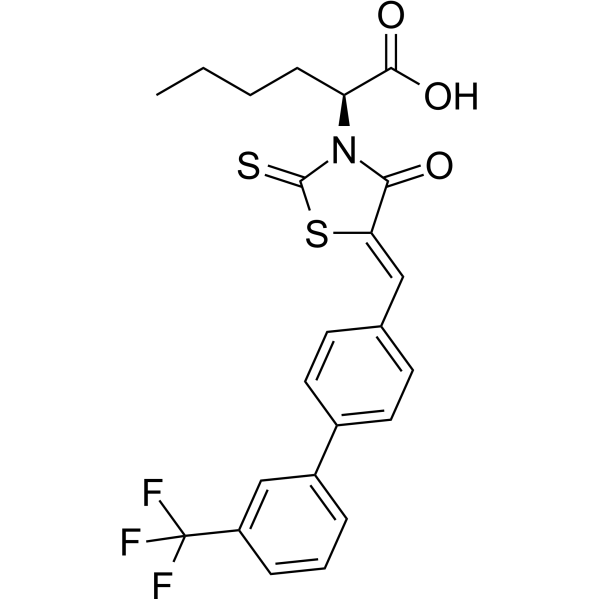
| Cat. No. |
Product Name |
Category |
Target |
Chemical Structure |
| Recombinant Proteins Recommended: |
|
| Cat. No. |
Compare |
Product Name |
Species |
Source |
Compare Products
|
| Products |
|
| Cat. No. |
|
| Species |
|
| Source |
|
| Tag |
|
| Accession |
|
| Gene ID |
|
| Molecular Weight |
|
| Purity |
|
| Endotoxin Level |
|
| Biological Activity |
|
| Appearance |
|
| Formulation |
|
| Storage & Stability |
|
| Shipping |
|
| Free Sample |
Yes
No
|
| Size |
* This product has been "discontinued".
Optimized version of product available:
|
| Cat. No. |
Product Name |
Application |
Reactivity |
-
- HY-P81300A
-
|
PTPN1; PTP1B; tyrosine-protein phosphatase non-receptor type 1; protein-tyrosine phosphatase 1B; PTP-1B
|
WB, IHC-P
|
Human |
-
- HY-P81300
-
|
PTPN1; PTP1B; tyrosine-protein phosphatase non-receptor type 1; protein-tyrosine phosphatase 1B; PTP-1B
|
WB, ICC/IF, IP
|
Human |
-
- HY-P82031
-
|
PTPN1; PTP1B; tyrosine-protein phosphatase non-receptor type 1; protein-tyrosine phosphatase 1B; PTP-1B
|
WB, IHC-F, IHC-P, ICC/IF
|
Human |
-
- HY-P83448
-
|
protein tyrosine phosphatase type IVA; member 2; HH13; OV-1; PRL2; HH7-2; PRL-2; PTP4A; HU-PP-1; PTPCAAX2; ptp-IV1a; ptp-IV1B
|
WB, IP
|
Human |
-
- HY-P80785
-
|
UCHL1 / PGP9.5; UCHL1; B220; CD 45; CD45; cd45 antigen; ec3.1.3.48; GP 180; GP180; Human homolog of severe combined immunodeficiency due to PTPRC deficiency; L CA; L-CA; lca; Leukocyte common antigen; LY 5; LY5; protein tyrosine phosphatase receptor type
|
WB, IHC-F, IHC-P, ICC/IF, IP
|
Human, Mouse, Rat |
|
PGP9.5 Antibody is a non-conjugated and Rabbit origined monoclonal antibody about 25 kDa, targeting to PGP9.5. It can be used for WB,IHC-F,IHC-P,ICC/IF,IP assays with tag free, in the background of Human, Mouse, Rat.
|
Your information is safe with us. * Required Fields.
Inquiry Information
- Product Name:
- Cat. No.:
- Quantity:
- MCE Japan Authorized Agent:




























































